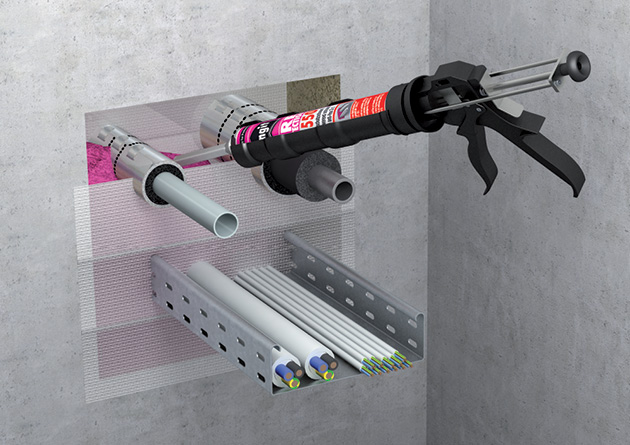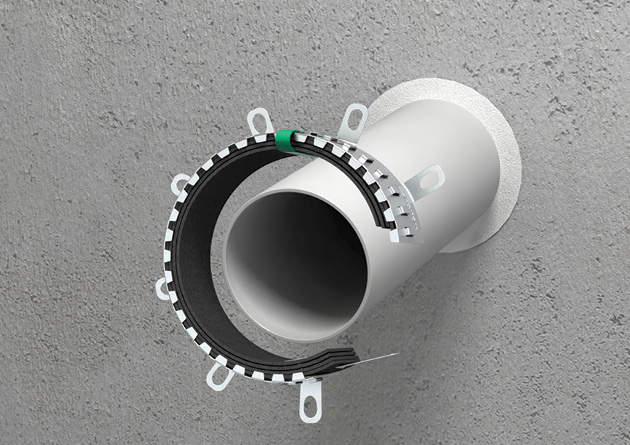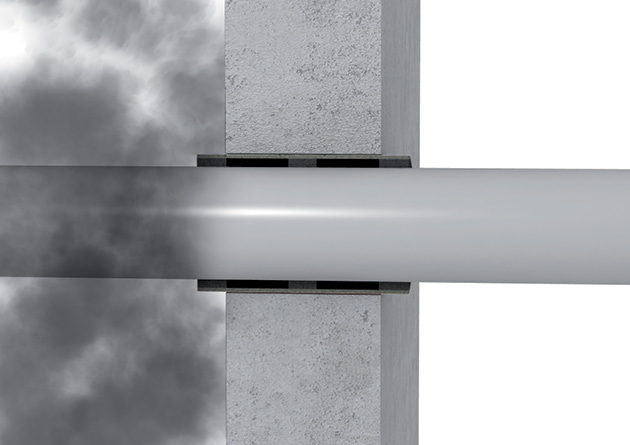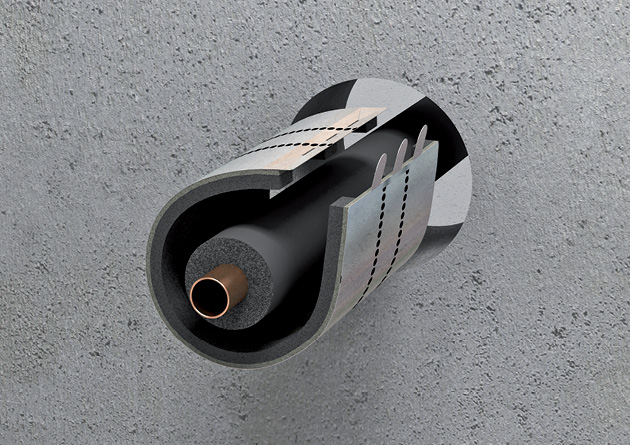Fire sealing of penetrations
The purpose of compartmentation is to prevent the rapid spread of fire, reduce the chance of fires growing, and limit the damage caused to the building and its contents.
When apertures for pipes and cables are made in fire compartment walls and ceilings, they must be effectively fire-sealed to retain the effectiveness of the fire compartment. Our range of Walraven Pacifyre® are suitable for sealing pipe and cable penetrations effectively.
Download Fire Protection Systems brochure

How to select the right fire stop
Standard fire collars are a popular choice when looking at fire sealing of pipe penetrations through firewalls. They are suitable for use on plastic pipes and are usually made of steel with an inner lining of intumescent material which activates in the event of a fire. The intumescent expands and closes the hole left by the collapsing pipe, so retaining the structure’s integrity. Once expanded, they will resist a fire for either two or four hours, depending on pipe material and application. Benefits of using standard fire collars include:
- They are a cost effective solution
- Most are easy to install on new builds or when retrofitting
- They are available in a wide range of sizes
Our Walraven Pacifyre® BFC Fire Collar is the perfect collar if you are looking for a reliable, standard solution that has the added reassurance of ETA Certification and CE Marking.
Alternatives to standard fire collars
Standard fire collars are not suited to ALL scenarios, and so it is important to consider the individual needs of each installation to ensure the correct type of fire sealing product is selected. Some of the criteria that should be considered when choosing a fire stop includes:
- Pipe type & size
- Fire resistance period required
- Insulation requirement
- Wall, floor or linear gap
- Pipe movement expected? Vibration or thermal expansion?
- Mechanical strength? Load bearing?

Examples of when you may need a specialist product…
Metal Pipes – Standard fire collars are usually not suitable for fire sealing metal pipes. The intumescent will not be able to crush a metal pipe in the same way it can a plastic pipe. You are likely to need a more specialist collar like our Walraven Pacifyre® EFC Endless Fire Collar or a pipe wrap or sleeve.
Movement or vibration – If there is significant movement expected either from the pipe’s thermal expansion, vibration or the building movement, then a standard collar may not be effective. A fire sleeve such as our Walraven Pacifyre® MKII Fire Sleeve has been installed in situations to deal with pipe movement. You can read our case study about its use in The Shard.
Noise insulation – Many buildings these days also require additional noise insulation from products, especially in built-up areas like London. A standard fire collar does not provide any noise insulation. Alternatives would be our Walraven Pacifyre® MKII Fire Sleeve which has special noise-insulating benefits built-in, or our Walraven Pacifyre® AWM III Fire Collar, which can be installed with noise insulation strips.
Remedial work – Often in renovation projects you may come across challenging situations where the pipes were previously installed without considering fire-stopping products. Therefore, for example, there may not be enough space to fit a standard collar. Our Walraven Pacifyre® EFC is a versatile and unique fire collar, perfect for these situations. It can fit multiple pipes through one collar and be fitted in awkward spaces like pipes that are installed in a corner or flush to a wall and much more.









































